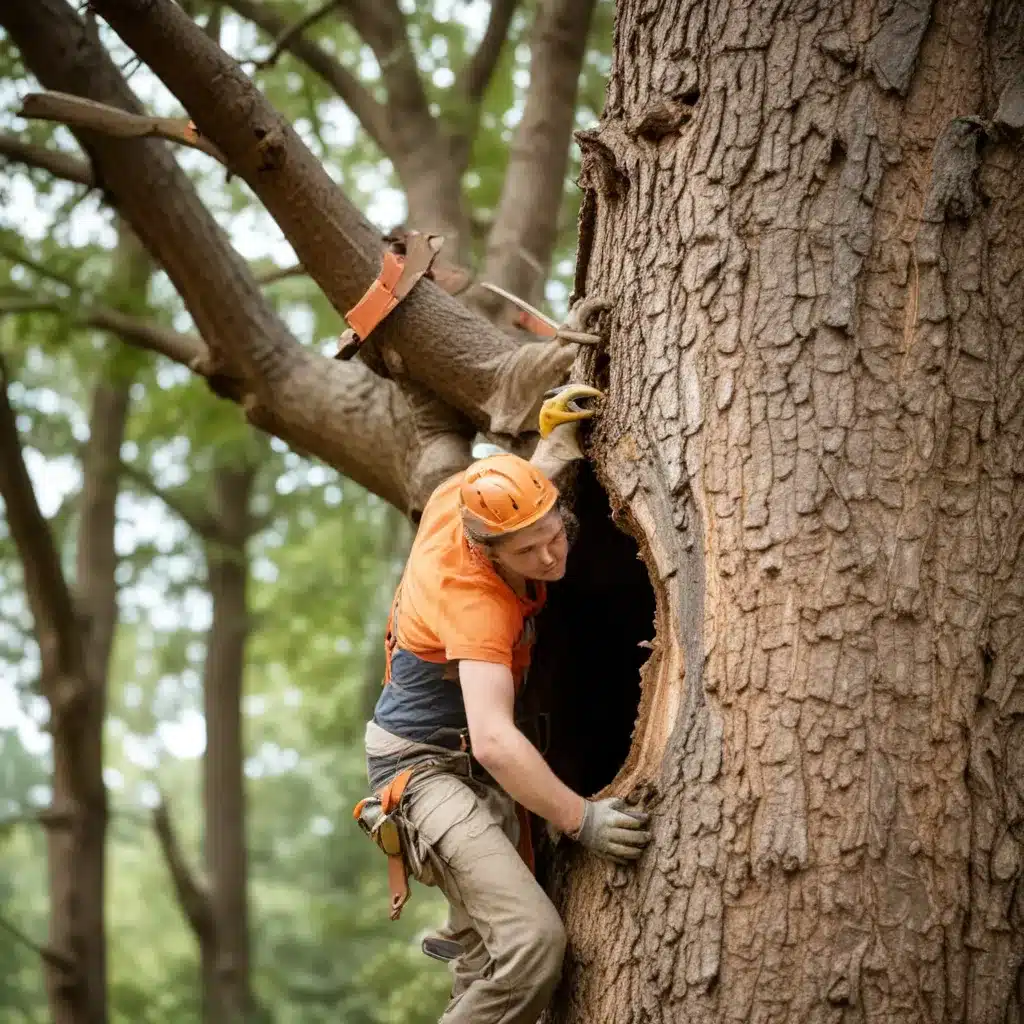
As a tree care specialist serving the TriCounty region, I’ve witnessed firsthand the immense value that trees bring to our communities. From enhancing aesthetic appeal to providing crucial ecosystem services, these living assets play a pivotal role in shaping the character and livability of our neighborhoods. However, when not properly maintained, trees can also pose significant risks to property and personal safety. In this comprehensive guide, we’ll explore the critical process of tree risk assessment and the strategies employed to mitigate potential hazards, ensuring the long-term health and security of your landscape.
Tree Risk Identification
The first step in safeguarding your property is to accurately identify potential tree-related risks. Tree hazard assessment, conducted by certified arborists, is a systematic evaluation that examines the structural integrity, environmental factors, and overall condition of your trees.
Structural Integrity Analysis
Arborists begin by thoroughly inspecting the tree architecture, evaluating factors such as branch attachment, trunk condition, and root stability. Advanced techniques, like resistograph testing and aerial inspections, may be employed to gather detailed insights into the tree’s internal structure and any hidden defects.
Environmental Factors
In addition to structural integrity, arborists also assess the external environmental conditions that can influence a tree’s risk profile. Factors like soil moisture, pest infestations, and disease prevalence are carefully examined, as they can compromise a tree’s overall health and increase the likelihood of failure.
Extreme weather events, such as high winds, heavy rainfall, and ice accumulation, pose significant threats to tree stability. Arborists analyze historical weather patterns and potential future scenarios to anticipate and mitigate these environmental risks.
Tree Risk Mitigation
Once the tree risk assessment is complete, arborists develop customized mitigation strategies to address the identified hazards and ensure the safety of your property.
Pruning and Maintenance
Proactive pruning is a fundamental technique for reducing tree risks. Arborists carefully remove dead, damaged, or structurally unsound branches, promoting healthy growth and minimizing the potential for branch failure. Regular maintenance, including cabling, bracing, and fertilization, can also enhance a tree’s structural integrity and resilience.
Tree Removal and Replacement
In some cases, the risks posed by a tree may be too significant to mitigate through maintenance alone. Arborists may recommend the removal of a tree if it is deemed structurally unstable, diseased, or poses an unacceptable threat to your property or the surrounding environment. When removal is necessary, they will develop a comprehensive plan to ensure the safe and efficient execution of the task.
Proactive tree replacement, using carefully selected species that are well-suited to the local climate and soil conditions, can help maintain the aesthetic and ecological benefits of your landscape while reducing future risks.
Emergency Response Planning
Unexpected weather events or other natural disasters can compromise the stability of trees, leading to sudden failures and potential damage. TriCounty Tree Care maintains a dedicated emergency response team to address these situations promptly, ensuring the safety of your property and the surrounding community.
Arboricultural Best Practices
Safeguarding your property goes beyond reactive risk mitigation; it requires a holistic approach to tree management that incorporates best practices in arboriculture.
Tree Selection and Planting
When introducing new trees to your landscape, it’s essential to carefully consider native species that are well-adapted to the local environment. Factors such as climate suitability, growth habits, and pest/disease resistance should guide the selection process, ensuring the long-term health and stability of your trees.
Proper planting techniques, including soil preparation, root placement, and staking, are critical for establishing strong, resilient trees that can withstand the challenges of the urban environment.
Proactive Tree Management
Ongoing tree care and regular inspections by certified arborists are vital for maintaining the health and safety of your landscape. Proactive measures, such as preventive treatments against pests and diseases, can significantly reduce the risk of future issues.
Environmental Impact of Trees
Beyond their role in enhancing property values and personal safety, trees are essential components of our local ecosystems, providing invaluable ecosystem services and supporting biodiversity.
Ecosystem Services
Trees play a crucial role in carbon sequestration, air purification, and stormwater mitigation. By understanding and leveraging these natural benefits, property owners can contribute to the overall environmental sustainability of their communities.
Biodiversity Conservation
Healthy, well-maintained trees offer habitats and food sources for a diverse array of wildlife, from pollinators to birds and small mammals. Preserving these natural corridors is essential for supporting local biodiversity.
Regulatory Compliance
In addition to the practical and environmental considerations, property owners must also be mindful of the legal and regulatory aspects surrounding tree management.
Local Ordinances and Permits
Many municipalities have established tree preservation policies and permitting requirements for activities such as pruning, removal, or planting. Familiarizing yourself with these local regulations is crucial to ensure compliance and avoid potential penalties.
Liability and Risk Management
As stewards of the trees on your property, you have a duty of care to maintain their health and safety. Proper risk assessment and mitigation strategies can help minimize your liability in the event of tree-related incidents or damage.
At TriCounty Tree Care, we are committed to empowering property owners with the knowledge and resources necessary to safeguard their landscapes. By embracing a comprehensive approach to tree risk management, you can not only protect your assets but also contribute to the overall well-being and resilience of our shared environment. Contact us today to schedule a professional tree risk assessment and take the first step towards a safer, greener future.


